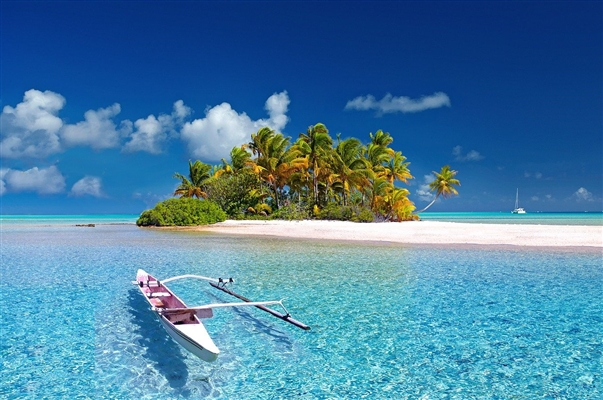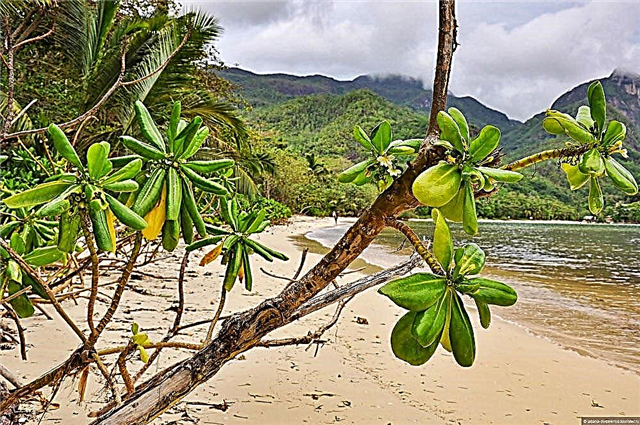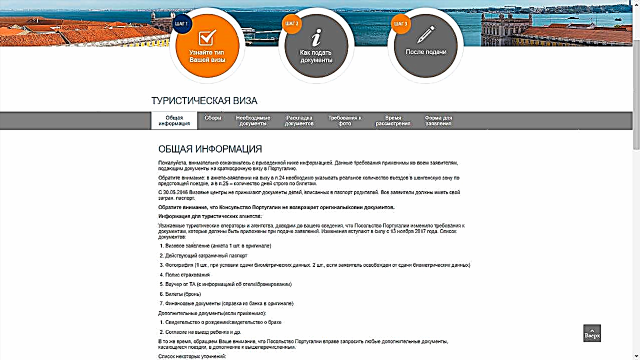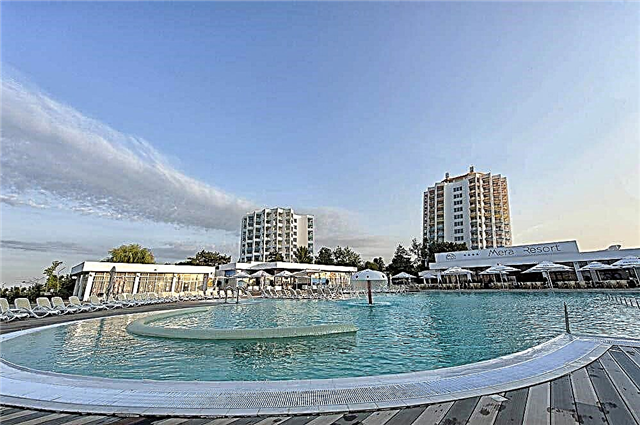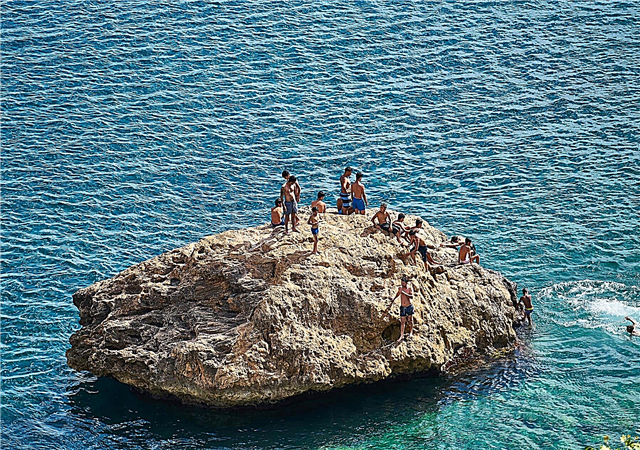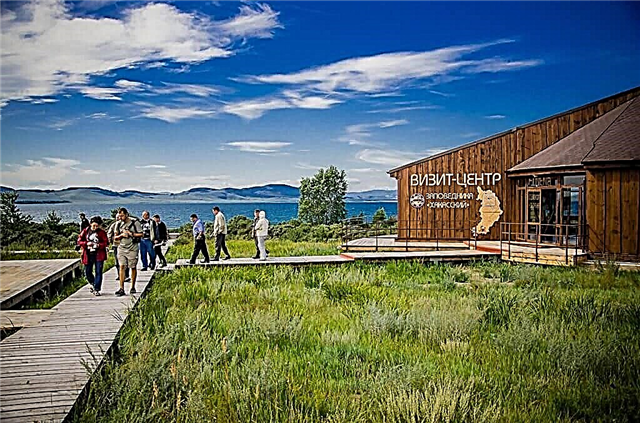The Arkhangelsk Region occupies an impressive territory in the north-west of the country. The geographical position among other things played a role in the emergence of some of the attractions here. Caves, islands, lakes - the landscape and related events have become symbols of the region. Significant places and museums related to the navy, the cosmodrome, and research activities are of no less importance.
If desired, tourists can stay in Arkhangelsk and the surrounding area for a long time, they will not be bored, since the excursion program is extensive and varied. The region cannot do without natural monuments and reserves, because the preservation of local beauties is an important task, relevant both for past generations and for present.
The most interesting and beautiful places in the region
List, photos with names and descriptions of the best attractions!
Plesetsk cosmodrome
Founded in 1957 in the city of Mirny. The area is over one thousand seven hundred square kilometers. On the territory there are launch and technical complexes, one and a half thousand outbuildings, an acid-nitrogen plant, a specialized gas station, an airfield, energy supply facilities and a computing center. Rockets of various classes and purposes are launched from the cosmodrome. The number of successful starts has exceeded several thousand.

Solovetsky monastery
Founded at the beginning of the 15th century. Located on the islands of the same name in the White Sea. The architectural ensemble is surrounded by high walls. There are eight towers and seven gates. Several churches, stone chambers, a mill, two cathedrals and outbuildings are all included in the complex. Each building is a monument of the era, they have a different time of construction, but the style is the same.

Malye Korely
Museum of local art and wooden architecture. Year of foundation - 1964. In 1973, visitors were allowed to enter the territory of the complex in the open air. It stands on the Northern Dvina and covers an area of almost one hundred and forty hectares. Buildings from different places are collected nearby. They have a different initial purpose: from religious to everyday life. There is a tourist center with a similar name nearby.

Kenozersky National Park
Founded in 1991. The area is about one hundred and forty thousand hectares. Included in the World Heritage List. Surrounded by dense forests. Taiga vegetation predominates. There are also lakes, swamps and meadows. Among the representatives of the animal world there are species that are not typical for these latitudes. The diversity of flora and fauna is great, it is preserved in its original form, therefore it is so appreciated by ecologists and researchers.

Franz Josef Land
The archipelago consists of one hundred ninety-two islands and covers an area of over sixteen thousand square kilometers. The northernmost point of Russia is located on Rudolf Island. The surface of all the islands is plateau-like, covered with glaciers with lakes. For this reason, plants are rare: they are mainly mosses. There is no permanent population. Only researchers and tourists come here.

Kiy-island
It extends over three kilometers in length and ranges from one hundred to five hundred meters in width. Located in the White Sea. There is a small holiday house on the island, founded in 1924. An annual jazz festival is also held here. The main attraction is the Onega Cross Monastery. Its story began with the miraculous rescue of a monk and the establishment of a cross in honor of this event. Closed in 1922 and gradually collapsing.

Kargopolye
A city with a rich history. On such a modest territory, there are many cultural heritage sites. Churches, temples, squares are the architectural values of the country. Houses of merchants and museums in honor of famous fellow countrymen are another distinctive feature of Kargopol. The Kargopol clay toy, a folk craft, originated in the vicinity. The local population speaks with a special pronunciation.

Ernst Krenkel Observatory
Moved from Hooker Island to Hayes Island in 1957. The peculiarities of its location make it an important object for researchers. The data collected here is often unique. From here, meteorological rockets are launched. The observatory is kept in perfect order. The buildings belonging to the complex are renovated and repaired as needed.

Pinega caves
Long tunnels are connected by passages of different widths. The patterns on the walls and, most importantly, on the ceiling appeared thanks to the frozen water. Moreover, in each room they are different. In some, huge frozen icicles of bizarre shapes have formed, in others - only outlines, in others - the formations are more reminiscent of crystals. Sightseeing tours mainly take place along the Golubinsky Prove.

Solovetsky Botanical Garden
Founded in 1922. It is located between two lakes and covers an area of five hectares. There were several stages of planting on the territory. The first ones did not survive, but the subsequent ones survived and still grow here. The oldest of them are cedars and apple trees. In total, more than five hundred species of plants have been collected here, from ubiquitous to rare and protected ones. The garden is managed by a museum-reserve.

Lake-channel system Solovki
Unique not only because of its length and tight weave, but also for other reasons. For example, nearby lakes, and there are about four hundred of them on the territory, can have a difference in water level of twenty meters. The system is man-made and its creation is attributed to Abbot Philip. Underground canals also enter the territory of the monastery. Subsequently, the system expanded and changed to suit the times.

Northern Dvina
Navigable river flowing into the White Sea. The length is almost seven hundred and fifty kilometers. The source is located at the confluence of the Sukhona and the South. It has many tributaries. Most of the recharge comes from spread snow. A steamer named after Gogol runs along the Northern Dvina. It operates cruise flights and is the last remaining wheeled in the country.

Cape Pur-Navolok
It is considered the point from which the foundation of Arkhangelsk began. A fortress appeared on its territory, necessary for protection and trade, and then other buildings, which eventually formed a city. Part of the wall of the Gostiny Dvor and one of the towers have survived from the architecture of that period. The restored building is the oldest surviving building, albeit not entirely. Now it houses a local history museum.

Historical and Memorial Museum of M. V. Lomonosov
The occupied rear was built in 1892, and the museum opened in 1940. It is located on the site where the Lomonosovs' house stood. The collection of exhibits tells about the researcher, reveals some veils of secrets connected with his early life. Several dozen rarities have gone through restoration work, others have been recreated from scratch or are already in good condition. There are also pavilions for temporary exhibitions and a conference room.

Yagrinsky beach
It is located on the island of the same name, not far from the White Sea coast and the mouth of the Northern Dvina. The season when you can swim and sunbathe is short here. This does not prevent local residents and guests from choosing the beach as a permanent vacation spot. The sand is darkish, it is difficult to walk on it, but the water is clear with a pleasant shade. There is not much vegetation in the area, but from certain angles the territory seems picturesque.

Labyrinths of the Big Zayatsky Island
All of them are man-made and different in diameter. The smallest is three meters, the largest is twenty-five. Concentrated almost a dozen unique structures on a very modest area in the west of the island.The labyrinths are stone, low, covered with vegetation, and consist of heaps of boulders. Burial structures were also found here. Excavations on the mounds have revealed human remains.

Anthony-Siysk monastery
Founded in 1520. Over the course of a century, add-ons and some changes in appearance took place. Located on the peninsula. In the 20s of the last century, it ceased to fulfill its direct purpose: it was either used as a storage facility, then it became a holiday home, and so on. In 1992 he returned to the jurisdiction of the Russian Orthodox Church. Trinity Cathedral, Annunciation and Sergievskaya churches - architectural monuments included in the complex.

Church of St. John Chrysostom in Saunino
Built in the 17th century. Monument of wooden architecture. It stands in the middle of a field, not far from the village of Saunino. The painted iconostasis, the most valuable of the church, has been partially preserved. The bell tower is a separate building. Its height is thirty-four meters. Visiting the church is possible only by prior arrangement: you can choose to book a tour or watch yourself.

Vvedensky Cathedral in Solvychegodsk
Year of foundation - 1565. Located on the banks of the Solonikha. The first buildings of the monastery of the same name were wooden; they were gradually replaced by stone ones. The Strogonovs merchants stood at the origins of the monastery. The area was badly damaged by fire, but the cathedral and other buildings were restored. After the revolution, the monastery was closed. The cathedral has survived to this day, looks presentable from a distance, but is being destroyed.

Chumbarov-Luchinsky Avenue
Center of Arkhangelsk. Its length is one thousand two hundred meters. It used to be called Pskov Avenue. Renamed in honor of the revolutionary and poet Fyodor Stepanovich. Part of the road is a pedestrian zone. The avenue can be called a street-museum: there are many architectural monuments of different years, iconic buildings for the city, monuments, statues and other attractions.

Monument to the Seal
Installed in 2010. The height is almost one and a half meters. On a light pedestal, like on an ice floe, a weighty seal is located. The history of the monument goes back to the Second World War. The city was starving when food was no longer enough. Seal hunting groups were organized. These animals, at the cost of their own lives, saved people. The monument pays tribute to them.

Monument to Lomonosov in Arkhangelsk
Bronze sculpture in the style of late classicism. Installed in 1832 on a cylindrical pedestal. Lomonosov is dressed in a toga and stands full-length. Next to him, on one knee, is a winged genius, transmitting a lyre to the researcher. The monument was moved several times. Now his place is at the Forestry Institute. Restoration work is carried out regularly, the last one in 2011.

Northern Maritime Museum
Opened in the mid 70s of the last century. The expositions are dedicated to: Arkhangelsk, the development of sea routes, the ports of the city and its environs, the events of the Second World War, the development of maritime affairs and others. There are more than twenty thousand exhibits in the museum. At the time of restoration, his funds partly went on a "journey" - they became belt exhibitions in museums in other cities.

Lake Lacha
It is located in the Kargopol region. The main freshwater reservoir of the region. Its area is about three hundred and fifty square kilometers. The following flows into the lake: Svid, Lokshma and Kovzha. It is fed by snow water for the most part. The surface is covered with ice in the fall. During the summer months, the water heats up quickly. The lake is home to many different types of fish and aquatic plants.

Vodlozersky National Park
It is located simultaneously on the territory of the Arkhangelsk region and Karelia. Founded in 1991. The total area is more than four and a half thousand square kilometers. Part of the territory is inaccessible for visiting in order to prevent human impact on the environment and to prevent the destruction of historical monuments. UNESCO recognized the park as a biosphere reserve.



